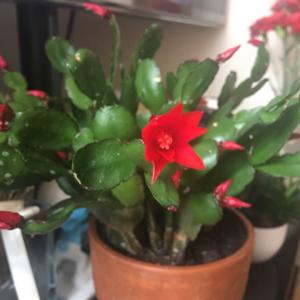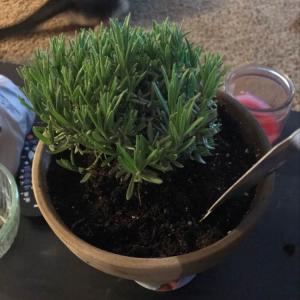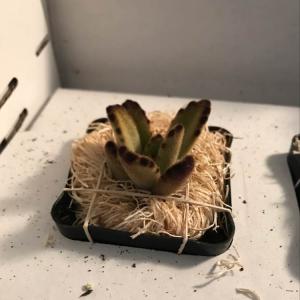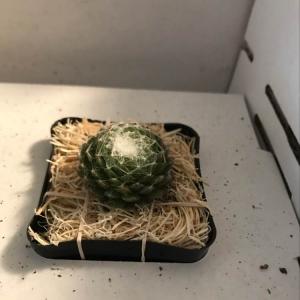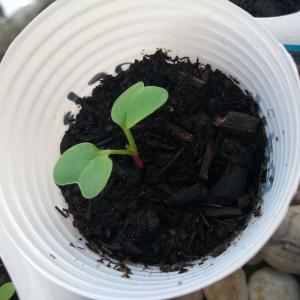文章
Miss Chen
2018年04月08日

Choosing the right type of cauliflower (Brassica oleracea var. botrytis ) for your garden means you'll get the taste and color you want and that it will work for your climate. Although cauliflower is technically a perennial, you'll be it as an annual and it may need up to 108 days from transplant to harvest, although some varieties mature faster. Most cauliflower varieties will grow in U.S. Department of Agriculture plant hardiness zones 3 through 9.
The cauliflower head is ready to harvest when its stunted flowers have formed into a dense, meaty "curd," which is white in classic cauliflower varieties, but can also be green, purple or orange.

Fast Growers
Many cauliflower hybrids were produced to take advantage of short growing seasons and can be planted late in the season. These types mature as early as 50 days after planting. To protect the heads of white varieties and prevent them from turning green, it's important to tie the leaves around them, a process that's called blanching. Some varieties are self-blanching -- the leaves wrap around the heads by themselves.
'Snowball'
Originating in France, 'Snowball' (Brassica oleracea var. botrytis 'Snowball') is a snow-white heirloom variety that was introduced to North America in 1888. It features a 6-inch head with tightly wound curds, and can be planted just before the last frost. It takes approximately 68 days to mature. This variety that requires slightly acidic soil with a pH between 6.5 and 7.0 and full sun. This is a self-blanching variety.

Related Hybrids
'Snow King' (Brassica oleracea var. botrytis 'Snow King') is a heat tolerant cultivar that matures quickly -- in as little as 50 days -- and produces a head that is 7 to 8 inches in diameter.
'Snow Crown' (Brassica oleracea var. botrytis 'Snow Crown') is another fast grower, reaching maturity 55 days after planting. The head grows to 7 or 8 inches in diameter. This variety is mildew resistant and keeps its flavor even if not harvested immediately.
'White Corona' (Brassica oleracea var. botrytis 'White Corona') has relatively small heads of only 3 to 4 inches, but it's one of the fastest growers of them all, maturing in only 30 days.
Rainbow Colors
Not all cauliflowers have white curds, and those that don't usually take longer to mature, and they don't need blanching. Because they take longer to mature, these varieties are often dense and have complex flavors.

'Alverda.pdf)' (Brassica oleracea var. botrytis 'Alverda') is similar to 'Romanesco' (Brassica oleracea var. botrytis 'Romanesco'), which is often misidentified as a type of broccoli but which, according to some, is not a cauliflower either. While 'Romanesco' is well-known for its geometric florets, 'Alverda' looks more like a traditional cauliflower. Sometimes called "broccoflower," it takes from 80 to 100 days to mature.
Other greenish "broccoflowers" include:
'Green Goddess Hybrid' (Brassica oleracea var. botrytis 'Green Goddess Hybrid')
'Chartreuse Hybrid II' (Brassica oleracea var. botrytis 'Chartreuse Hybrid II')
'Vitaverde' (Brassica oleracea var. botrytis 'Vitaverde')

'Violet Queen' (Brassica oleracea var. botrytis 'Violet Queen') is a warm-weather variety that grows best in USDA zones 7 through 11. It takes from 65 to 70 days to mature, and the purple florets, which are high in beta-carotene, are flavorful enough to eat raw.

'Cheddar' (Brassica oleracea var. botrytis 'Cheddar') produces a curd that, like its namesake cheese, is orange in color, and mixing the melted cheese with the steamed vegetable is certainly recommended. Orange cauliflower was originally discovered in cauliflower patch in Canada, and has since been crossbred to produce the 'Cheddar' variety. It takes around 58 days to mature.
The cauliflower head is ready to harvest when its stunted flowers have formed into a dense, meaty "curd," which is white in classic cauliflower varieties, but can also be green, purple or orange.

Fast Growers
Many cauliflower hybrids were produced to take advantage of short growing seasons and can be planted late in the season. These types mature as early as 50 days after planting. To protect the heads of white varieties and prevent them from turning green, it's important to tie the leaves around them, a process that's called blanching. Some varieties are self-blanching -- the leaves wrap around the heads by themselves.
'Snowball'
Originating in France, 'Snowball' (Brassica oleracea var. botrytis 'Snowball') is a snow-white heirloom variety that was introduced to North America in 1888. It features a 6-inch head with tightly wound curds, and can be planted just before the last frost. It takes approximately 68 days to mature. This variety that requires slightly acidic soil with a pH between 6.5 and 7.0 and full sun. This is a self-blanching variety.

Related Hybrids
'Snow King' (Brassica oleracea var. botrytis 'Snow King') is a heat tolerant cultivar that matures quickly -- in as little as 50 days -- and produces a head that is 7 to 8 inches in diameter.
'Snow Crown' (Brassica oleracea var. botrytis 'Snow Crown') is another fast grower, reaching maturity 55 days after planting. The head grows to 7 or 8 inches in diameter. This variety is mildew resistant and keeps its flavor even if not harvested immediately.
'White Corona' (Brassica oleracea var. botrytis 'White Corona') has relatively small heads of only 3 to 4 inches, but it's one of the fastest growers of them all, maturing in only 30 days.
Rainbow Colors
Not all cauliflowers have white curds, and those that don't usually take longer to mature, and they don't need blanching. Because they take longer to mature, these varieties are often dense and have complex flavors.

'Alverda.pdf)' (Brassica oleracea var. botrytis 'Alverda') is similar to 'Romanesco' (Brassica oleracea var. botrytis 'Romanesco'), which is often misidentified as a type of broccoli but which, according to some, is not a cauliflower either. While 'Romanesco' is well-known for its geometric florets, 'Alverda' looks more like a traditional cauliflower. Sometimes called "broccoflower," it takes from 80 to 100 days to mature.
Other greenish "broccoflowers" include:
'Green Goddess Hybrid' (Brassica oleracea var. botrytis 'Green Goddess Hybrid')
'Chartreuse Hybrid II' (Brassica oleracea var. botrytis 'Chartreuse Hybrid II')
'Vitaverde' (Brassica oleracea var. botrytis 'Vitaverde')

'Violet Queen' (Brassica oleracea var. botrytis 'Violet Queen') is a warm-weather variety that grows best in USDA zones 7 through 11. It takes from 65 to 70 days to mature, and the purple florets, which are high in beta-carotene, are flavorful enough to eat raw.

'Cheddar' (Brassica oleracea var. botrytis 'Cheddar') produces a curd that, like its namesake cheese, is orange in color, and mixing the melted cheese with the steamed vegetable is certainly recommended. Orange cauliflower was originally discovered in cauliflower patch in Canada, and has since been crossbred to produce the 'Cheddar' variety. It takes around 58 days to mature.
0
0






